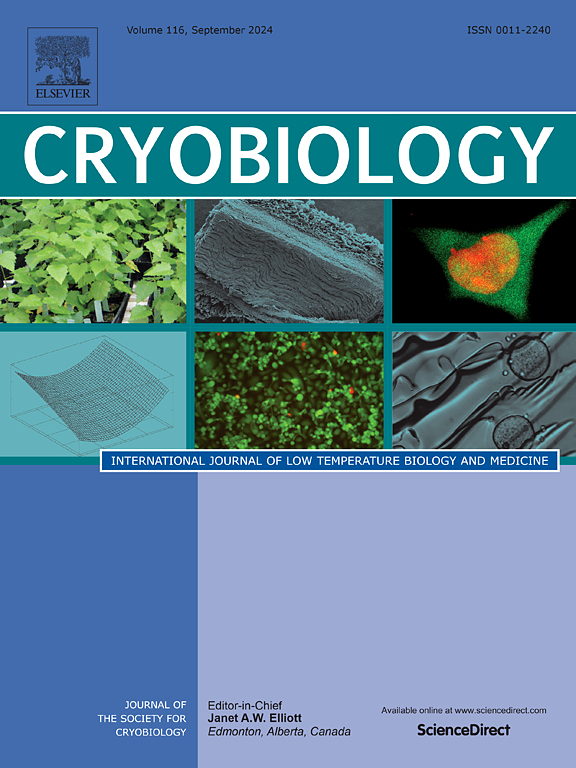评估在-80°C保存辐射松胚性培养物的替代冷冻方法:一项为期6年的研究。
IF 2.1
3区 生物学
Q2 BIOLOGY
引用次数: 0
摘要
体细胞胚胎发生是实现多品种林业的辐射松育种计划的重要组成部分。结合该技术,胚胎培养物的长期低温保存对于维持细胞系的生存能力是必要的,但这需要高昂的维护成本。在这项研究中,我们评估了在-80°C的超低温冰箱中长期保存几种辐射松胚性细胞系的方案的应用。此外,我们还研究了几个参数对方案的影响,如二甲亚砜冷冻保护剂溶液的效果、替代冷冻方法的有效性、解冻后处理的使用以及成熟阶段添加丁酸钠。我们发现二甲亚砜冷冻保护剂的使用促进了体细胞胚的产生;在-80°C下,缓慢冷却是保存胚性细胞系的唯一可行方法,使用丁酸钠对提高成熟和萌发期并不是很有效。此外,我们已经再生了胚胎细胞系,直到它们在6年的储存后转化为植物。根据这些发现,在超低温冰箱中储存的方案代表了保存辐射松体细胞胚性培养物的经济替代方案。本文章由计算机程序翻译,如有差异,请以英文原文为准。
Assessment of alternative freezing methods for preservation at −80 °C of radiata pine embryogenic cultures: A six-year study
Somatic embryogenesis is an essential component of breeding programs for Pinus radiata aimed at implementing multi-varietal forestry. Coupled with this technique, the long-term cryopreservation of embryogenic cultures is necessary to maintain the viability of the cell lines, but this entails high maintenance costs. In this research we evaluated the application of a protocol for long-term storage at −80 °C in an ultra-low freezer to preserve several radiata pine embryogenic cell lines. Also, we studied the influence of several parameters to optimize the protocol, such as the effect of dimethyl sulfoxide cryoprotectant solution, the effectiveness of alternative freezing methods, the use of post thawing treatments and the addition of sodium butyrate at maturation stage. We found that the use of dimethyl sulfoxide cryoprotectant enhanced somatic embryo production; slow cooling was the only viable method for preserving embryogenic cell lines at −80 °C and the use of sodium butyrate was not highly effective to improve maturation and germination stages. Moreover, we have regenerated embryogenic cell lines up to their conversion into plants after six years of storage. In line with these findings, the protocol to storage in an ultra-low freezer represents an economical alternative to preserve somatic embryogenic cultures of Pinus radiata.
求助全文
通过发布文献求助,成功后即可免费获取论文全文。
去求助
来源期刊

Cryobiology
生物-生理学
CiteScore
5.40
自引率
7.40%
发文量
71
审稿时长
56 days
期刊介绍:
Cryobiology: International Journal of Low Temperature Biology and Medicine publishes research articles on all aspects of low temperature biology and medicine.
Research Areas include:
• Cryoprotective additives and their pharmacological actions
• Cryosurgery
• Freeze-drying
• Freezing
• Frost hardiness in plants
• Hibernation
• Hypothermia
• Medical applications of reduced temperature
• Perfusion of organs
• All pertinent methodologies
Cryobiology is the official journal of the Society for Cryobiology.
 求助内容:
求助内容: 应助结果提醒方式:
应助结果提醒方式:


